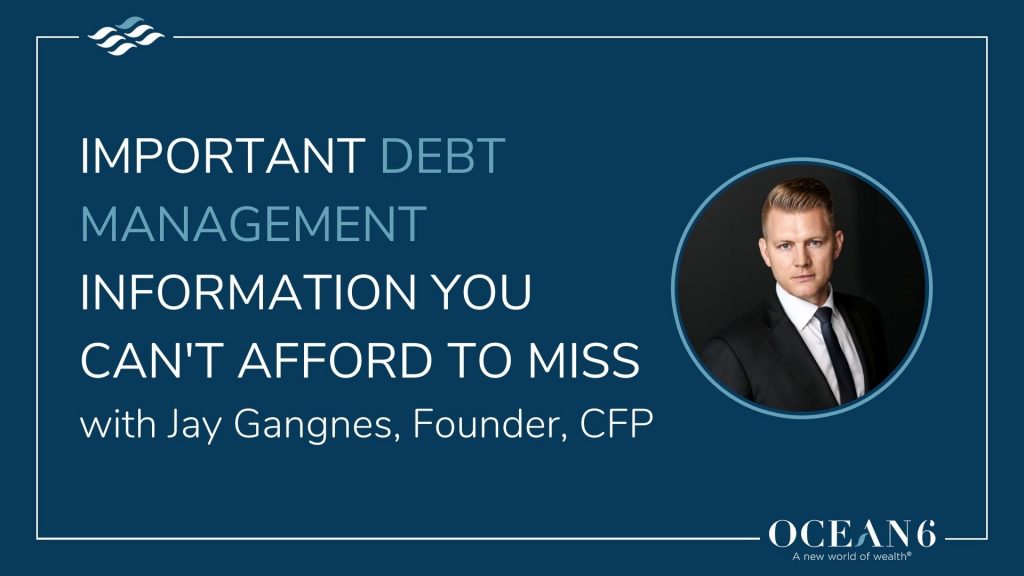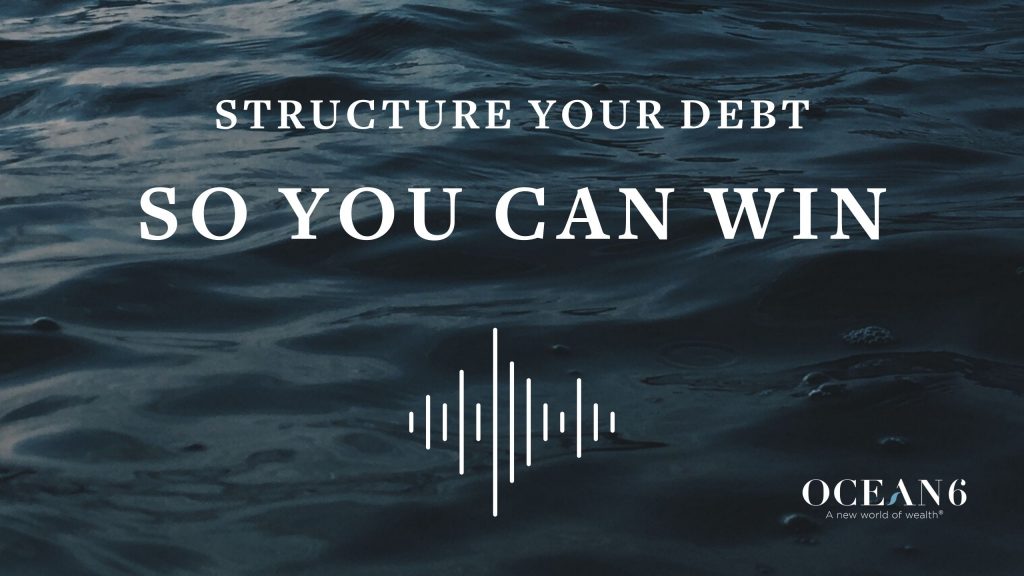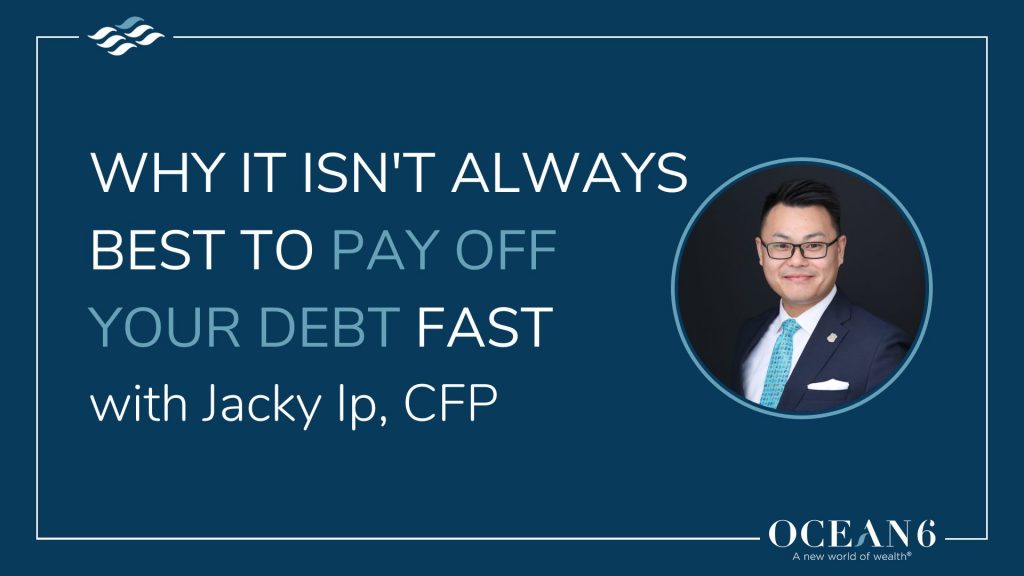There is traditionally a negative view around debt, but there are many long-term benefits when you use and structure your debt properly.
How do you know if you have a good relationship with your debts, and how do you ensure you have only good debts?
In this blog, we’ll educate you on the difference between good and bad debt, along with tips on managing your debt effectively.
What is Good Debt vs. Bad Debt
Debts are easily accessible. There are credit cards, car loans, store credit cards with 0% interest for six months, mortgages, student loans, etc.
Some debts are better than others. Here are two important considerations to determine if a debt is good or bad:
1. Is the interest rate on the debt higher than 10%?
Bad debt often has a high interest rate. We consider anything above 10% high. If the interest is lower than 10% and you can use it to build wealth, it is a good debt.
2. Is the debt generating a return
When the debt is used to purchase a depreciating asset, it’s often a bad debt. On the other hand, good debt can provide value in the long term and increase your overall net worth.
The table below illustrates an overview of good vs. bad debt.
| Good Debt | Bad Debt |
| • Interest payments are tax-deductible • Builds wealth • Low-interest rates • Creates new opportunities | • Interest payments are not tax-deductible • Depreciates wealth • High-interest rates • Takes away new opportunities |
One of the first good debts we encounter is student loans. It’s an investment in yourself to get a higher education and creates opportunities for you to make money sooner.
Credit card debt is a perfect example of bad debt. Interest rates on credit cards can be upwards of 20%, and your purchases usually don’t generate a return.
Four Effective Ways to Reduce and Manage Debt
Now that you know which debt is good and bad, here are some tips for reducing and managing those debts.
1. Treat your credit card like a debit card
Operated with the mindset that you should not spend it on your credit card if you don’t have the money in your chequing account. You want to be able to pay off your credit card balance anytime.
If you don’t treat your credit cards like a debit card, do one of two things: be consistent with paying off your credit card weekly or use cash/debit cards instead.
No amount of credit card rewards or cashback is more beneficial than not carrying a credit card debt. The average reward value of your credit cards is approximately 3% of what you spend. If you don’t pay off your balance each month, you’re paying 20% interest, which nets you -17% in value.
2. Don’t hold onto cash when you owe a debt
Having too much cash sitting in your bank account when you owe a debt is like borrowing your own money and paying interest to the bank.
Most people’s concern is not having cash accessible in an emergency if they use their money to pay down debt, but keeping too much cash means you’re losing the money to inflation and interest.
Instead, you can use a line of credit as an emergency fund. If an emergency ever happens, use the funds out of the line of credit and call your financial advisor to liquidate what you need to pay off the line of credit. Keep in mind that the actual cost of interest is not just the rate itself but also how many days you owe the interest. The interest rate on a line of credit is often no more than 10%, and you pay back what you borrow in a week; you don’t pay 10% interest, you pay only 0.19% for borrowing the funds for one week. You’re much more likely to make 0.19% more money if you invest it properly than if you keep it in a savings account.
3. Think about your debts holistically, not in silos
If you manage your debts separately rather than looking at the whole picture, you may not be paying off your debts efficiently.
To get strategic with paying off your debts, you first need to understand which ones are the good debts you can hold onto and which are the bad debts you need to get rid of.
You want to prioritize paying off all your bad debts first and then tackling your good debts afterwards. If you don’t do this, you can get stuck paying the minimums on all your debts, and you’ll be in debt for a very long time.
(Paying off your debt fast isn’t always the smartest thing to do. Here’s the exact order you should be paying down your debt)
4. Have a clear cashflow plan and don’t live above your means
Have a proper financial plan to guide your everyday spending to avoid overspending and accumulating more debt.
When this happens, you risk increasing your income as a business owner, which leads to paying additional income taxes to CRA. Organize your cash flow plan to allocate money to the right areas effectively.
Following these four tips will have a compounded effect.
(Want to reduce tax and beat the banks? Here’s how to structure your debt so you can win)
Watch the video on this topic
To summarize, here’s what you need to do if you want to ensure you’re maximizing your debt structure:
- Pay off any bad debts first
- Treat your credit cards like debit cards
- Don’t hold onto cash when you owe a debt
- Get clear on your cash flow and learn how to pay yourself best to avoid unnecessary personal income taxes
As a busy business owner, it’s easy to put your debts on the back burner. However, having an efficient debt strategy can make a world of difference. You’ll accomplish your goals sooner and develop a better relationship with money.
Book a call today. In our financial planning process, we spend a lot of time organizing your debt and cash flow to create wealth and lower interest payments.












